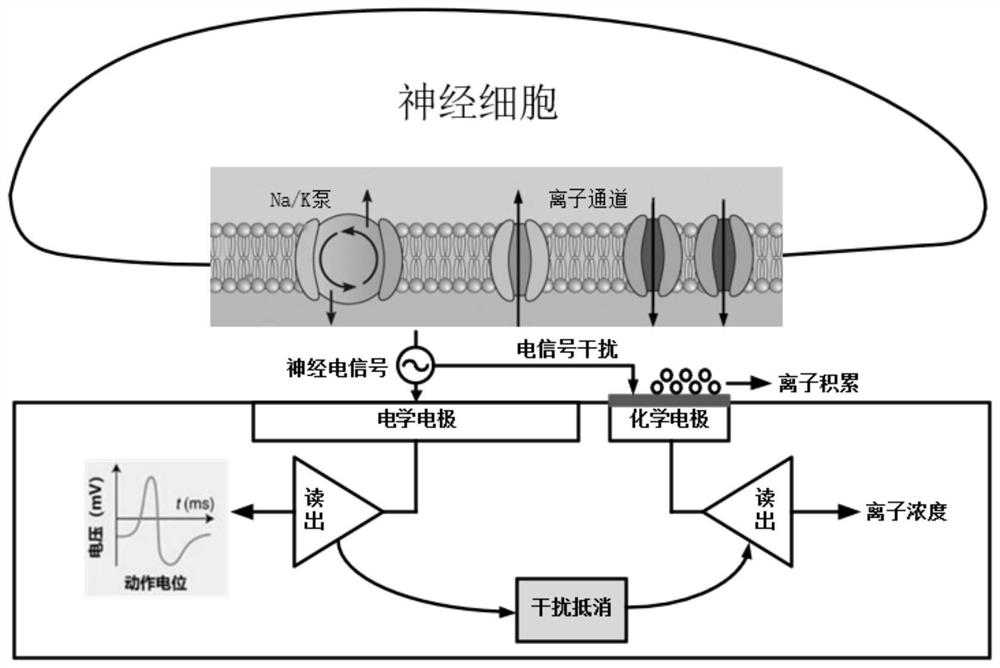Bimodal interference compensation circuit for neural signal acquisition
A technology of interference compensation and neural signals, applied in applications, material analysis through electromagnetic means, sensors, etc., can solve problems that affect the reading accuracy of chemical signals, unfavorable neural signal acquisition, and circuits that cannot be detected at the same time, so as to improve chemical detection. The effect of precision
- Summary
- Abstract
- Description
- Claims
- Application Information
AI Technical Summary
Problems solved by technology
Method used
Image
Examples
Embodiment Construction
[0021] In order to make the purpose, advantage, technical solution and implementation of the present invention clearer, the present invention will be further described in detail below in conjunction with examples and accompanying drawings, but the protection scope of the present invention should not be limited.
[0022] Such as figure 2 As shown, it is a schematic diagram of the overall structural framework of the present invention. It can be seen from the figure that a dual-mode interference compensation circuit for neural signal acquisition includes: an electrical sensing circuit 1, a chemical sensing circuit 2, an interference compensation circuit 3 and Control module 4, the input end of the electrical sensing circuit 1 is connected to the electrical electrode, and the nerve voltage signal collected is amplified and then output through the output end; the input end of the chemical sensing circuit 2 is connected to the chemical electrode, and the ion The potential signal on...
PUM
 Login to View More
Login to View More Abstract
Description
Claims
Application Information
 Login to View More
Login to View More - R&D
- Intellectual Property
- Life Sciences
- Materials
- Tech Scout
- Unparalleled Data Quality
- Higher Quality Content
- 60% Fewer Hallucinations
Browse by: Latest US Patents, China's latest patents, Technical Efficacy Thesaurus, Application Domain, Technology Topic, Popular Technical Reports.
© 2025 PatSnap. All rights reserved.Legal|Privacy policy|Modern Slavery Act Transparency Statement|Sitemap|About US| Contact US: help@patsnap.com



